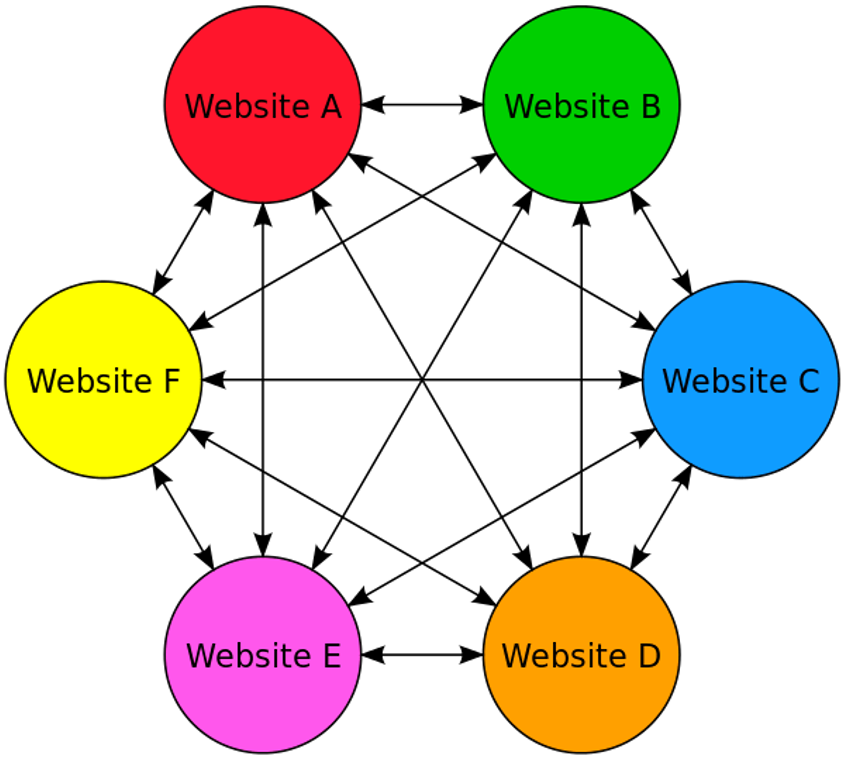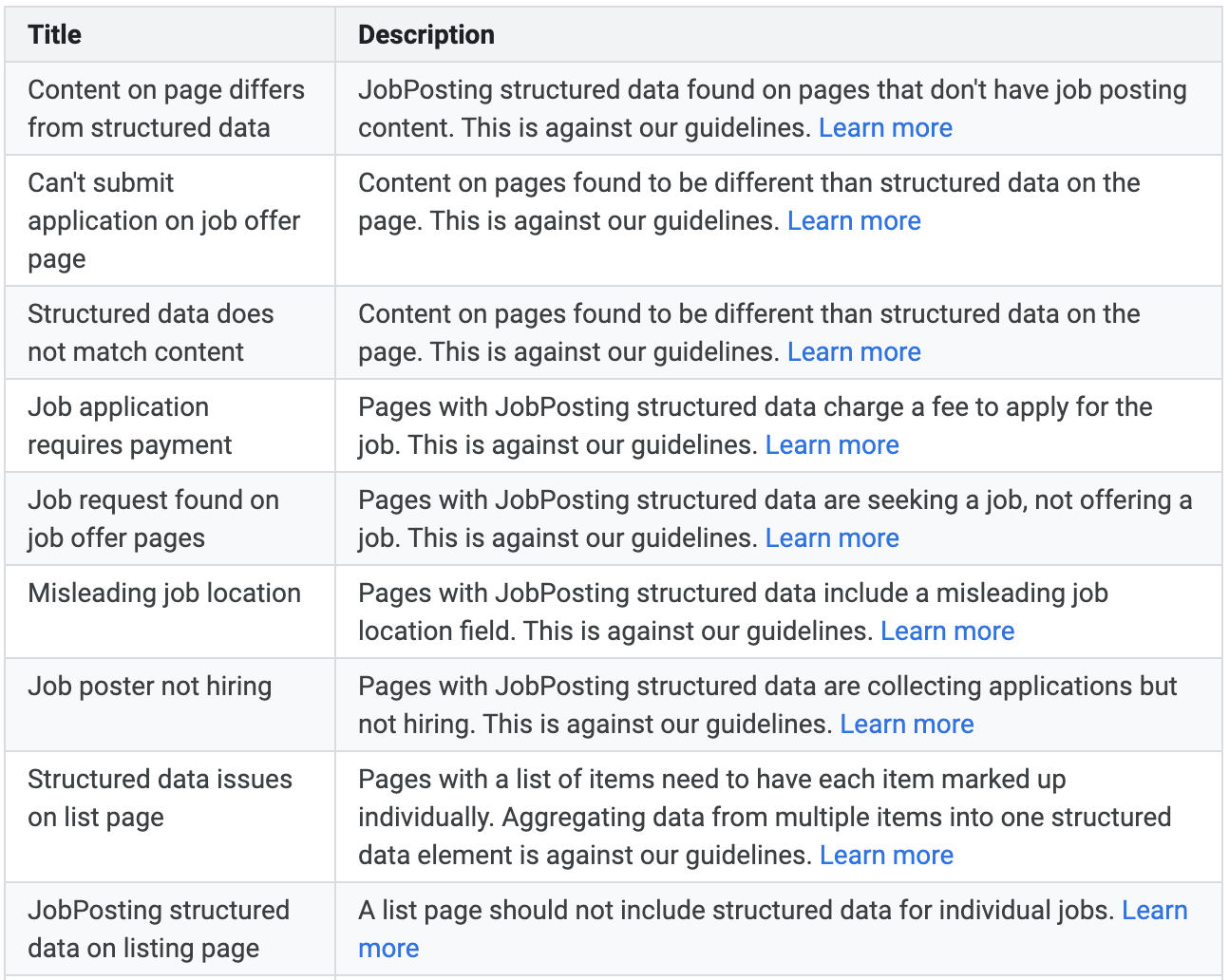
To remain the most popular search engine in the world, Google has to continuously update its algorithm to continue delivering users the most useful results.
To this end, Google also makes available Webmaster Guidelines, so everyone from web developers to SEO professionals knows the rules of the game.
Of course, there are plenty of people who want to win the game without following its rules.
For such people, there’s black hat SEO.
Black hat SEO gets its name from old cowboy movies where the bad guys wear a black hat.
Black hat SEO practitioners know the rules of search engine optimization and use that understanding to take shortcuts that aren’t exactly laid out in Google’s best practices.
This is in juxtaposition to white hat SEO practitioners who follow Google’s Webmaster Guidelines, promote high-value content, and engage in deep keyword research to win in the SERPS.
Google is good at identifying and penalizing black hat SEO techniques, but that doesn’t stop people from trying them anyway.
Here are 17 black hat practices to avoid because they can land you an algorithmic or manual penalty.
Some of these you may do without intending to, so it’s good to familiarize yourself with black hat SEO to make sure you’re in the clear.
Black Hat Link Techniques
1. Buying Links
A high-quality, relevant link can drive traffic to your domain while also telling Google’s algorithm that you’re a trustworthy source.
A good backlink can also help Google map your website so that it has a better idea of what you’re all about, making it easier to serve you up as a search result.
Buying a link, however, is against Google’s Webmaster Guidelines, and – according to Google – it doesn’t work.
If you’re caught, you could get an automatic and manual penalty that impacts specific pages, or worse, the entire site.
Google tracks links that are likely to have been bought and those that have been earned.
Additionally, the sort of website that sells you a link is the sort of website you wouldn’t want to buy a link from because it is easier than you think for Google to identify unnatural patterns – even for Google’s own properties.
2. Free Products for Links
Whether you’re giving or taking, exchanging free products (or discounts) for links is considered a link scheme by Google.
To not be considered a link scheme, make it a no-follow link, which is a link with a rel=“nofollow” tag.
A no-follow link ensures that the link doesn’t impact the search engine’s ranking algorithm.
3. Footer Links

The footer is prime real estate for a link because footers appear on every page of a website.
If you’ve been adding footer links with commercial anchor text at scale to manipulate results, Google will likely be able to identify those and penalize you for it.
4. Hidden Links

You may think that you can hide a link in your website’s text or by having the link appear as the same color as the background, but Google will notice and penalize you for trying to game the system.
Additionally, if you include enough irrelevant links, you’ll give Google less reason to direct traffic to your target audience since you’ll be diluting your relevance.
Deceptively hidden links are a violation of Google’s guidelines. That means:
- No hiding text behind an image.
- No keeping text off-screen using CSS.
- No using a font size of 0.
- No making one little character, like a period, a link.
5. Comment Spam

You may be able to share a link to your website in the comments section of a website, but you should avoid doing so unless it’s relevant.
Otherwise, you risk being penalized for being a spammer as using comments to build links is essentially not effective.
6. Overused Anchor Text

It may make sense to match your page’s title every time you share a link to it because the title is what your page is about, and consistency could imply relevancy.
But from Google’s perspective, this is also what it would look like if you were lazily spamming.
Instead, you should make your anchor text brief, relevant to the linked-to page, not stuffed with keywords, and unique.
This makes sense given that this is what anchor text would look like if the link were a natural part of its surroundings.
This rule holds for both internal and external links.
7. Malicious Backlinks
Some black hat SEO practitioners will try to use Google’s penalty system to advance their agenda by having websites that you wouldn’t want to associate with link to you to drag down your page rank.
For this reason, Google created a form to help you disavow links.
This way, when you go through your backlinks, you can disentangle yourself from any undesirable domains.
8. PBNs

PBNs are websites that link to each other.
They used to be much more prevalent in the 90s and early 2000s, particularly amongst fan pages for different tv shows, movies, musicians, etc.
They’re not necessarily a bad thing, but webrings are considered a link scheme when they’re designed to manipulate algorithms.
Content Black Hat Techniques
9. Keyword Stuffing

If SEO were only about using keywords, then a block of keywords would be all it takes to rank as number one.
But since Google wants to deliver high-quality results, it looks for content-rich in semantically-linked keywords.
That way, the algorithm is more likely to provide high-quality content instead of content that simply bears the superficial markings of high-quality content.
10. Hidden Content
Like a hidden link, hidden content is content that’s made the same color as the background.
It’s a tactic that intends to include as many keyword phrases, long-tail keywords, and semantically-linked words as possible in a page.
Of course, Google’s algorithm can tell the difference between keywords within the body of a paragraph and keywords hidden in the background.
There are several routes hidden content can take to end up on your site beyond being intentionally put there by the site owner.
- You could publish a guest post from someone who includes hidden content.
- Your commenting system could be insufficiently rigorous and, as a result, fail to pick up on hidden content.
- Your website could get hacked, and the hackers could put up hidden content. This is also known as parasite hosting.
- An authorized user could accidentally put up hidden content because they copied and pasted text with CSS styling from a different source.
Not all hidden content is forbidden, however.
The rule of thumb is that the content is okay so long as the content is visible to both the user and the search engine.
An example may be content that’s only visible to mobile visitors but is hidden to desktop visitors.
11. Article Spinning

Similar to duplicated or plagiarized content, article spinning is a technique that involves re-writing content by substituting synonyms, changing sentence structure, or re-writing text entirely while communicating the same information as the source material.
Article spinning can be done either manually or using technology.
While automated article spinning has advanced to the point where the articles are readable, Google will still penalize you for spun articles.
And for a good reason: spun articles degrade the quality of the internet.
12. Plagiarized or Duplicated Content
Sometimes known as scrapping, duplicating, or plagiarizing content can violate copyright or trademark laws.
Since Google wants to share high-quality domains, plagiarism is grounds for a penalty.
13. Rich Snippets Spam

Rich snippets are snippets with more information. More information can drive more traffic.
But there are many ways that the schema used to generate these snippets can be manipulated. In fact, there is an entire Google support page dedicated to it.
14. Cloaking
Cloaking is an old black hat trick that’s still used to this day: use a flash or animated page to conceal information your visitors that only Google can see in the HTML.
If Google catches you cloaking, you’ll get a penalty.
15. Doorway Pages
Doorway pages are a form of cloaking.
They’re designed to rank for particular keywords but then redirect visitors to other pages.
They’re also known as:
- Bridge pages.
- Portal pages.
- Jump pages.
- Gateway pages.
- Entry pages.
16. Keyword Stuffing in Alt Tags
You might think that alt-tags are a no harm opportunity to use as many keywords as possible, but stuffing in this context can also hurt your site’s rankings.
You’d also be misusing alt tags and, as a result, doing yourself and your site’s visitors a disservice. Alt tags are:
- Read aloud to visually impaired users by screen readers.
- What gets displayed if an image file cannot be loaded.
- Helpful to search engines trying to understand images.
17. Hacked Website

While having an unsecured website can’t technically get you a Penguin or Panda penalty, it could result in the loss of your valuable rankings.
If your website gets attacked or injected with malicious code and Google finds out, they can block your website for people using their search engine.
Not only will this cause you to lose the trust of anybody who visits your site from organic search, but it will cause your website to drop in the rankings just like a Penguin or Panda penalty would.
While it’s true you may receive a notification through Google Analytics that your site has been hacked, it still could mean a real penalty for your website in search results if Google knows your site contains malicious code.
Conclusion
The rewards of the black hat path are short-lived. They’re also unethical because they make the internet worse.
But you can’t do something right without knowing how to do it wrong, which is why every white hat SEO also needs to know about the black hat path.
That way, you know how to steer clear of it.
And if you accidentally get penalized or decide to change your practices, there are ways to recover from Google’s penalties.
Source: https://www.searchenginejournal.com/11-black-hat-techniques-can-kill-seo-campaign/180601/




